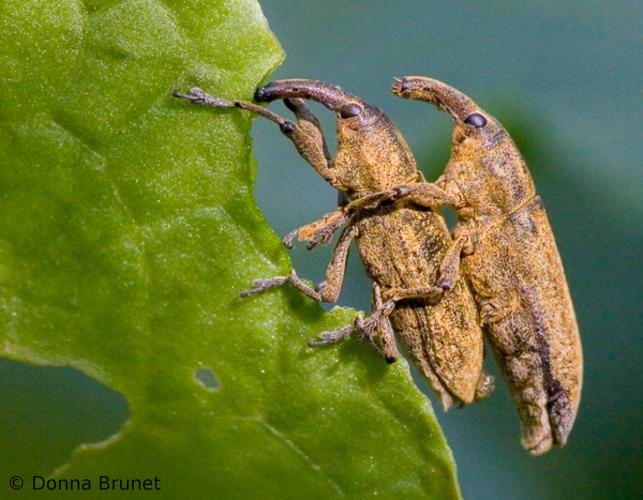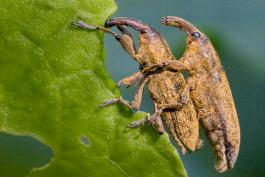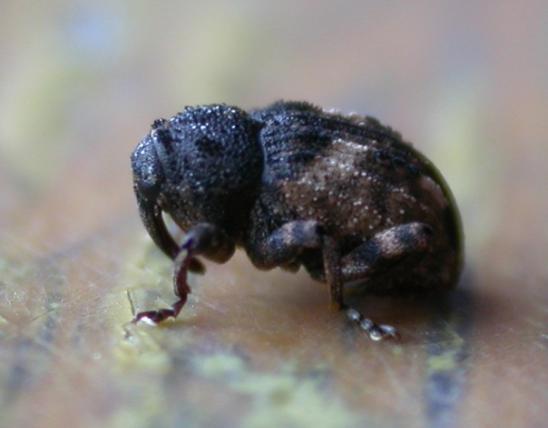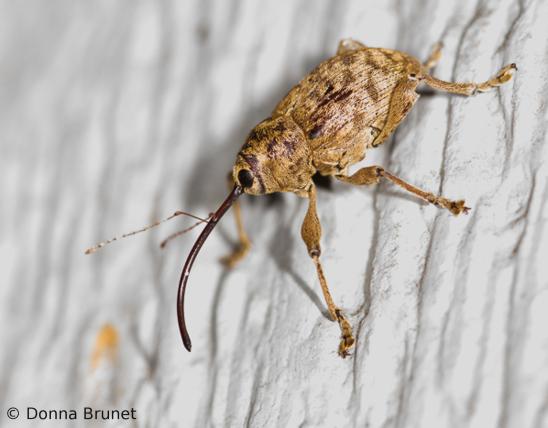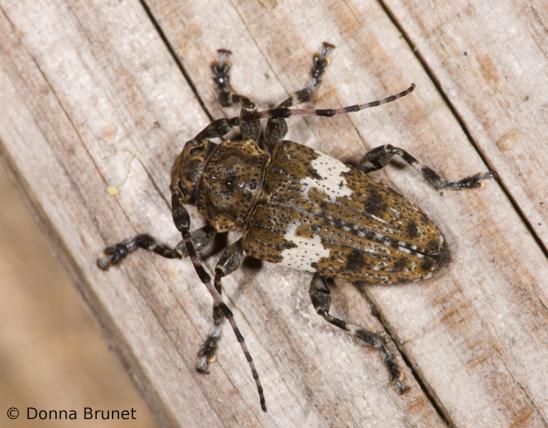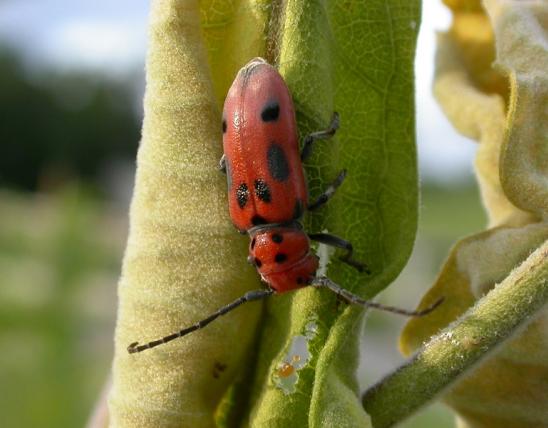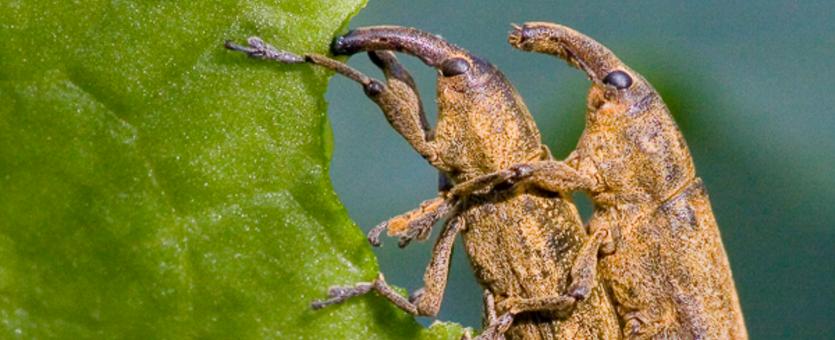
The rhubarb weevil has a dusty, bright yellow coating and feeds on rhubarb, dock, thistles, and other plants in the smartweed or buckwheat and sunflower families. Tough scars in the stalks of rhubarb are a sign of their presence.
Like other weevils, the rhubarb weevil is a plant-eating beetle with a characteristic long, down-curving snout. The antennae are clubbed and elbowed. There are thousands of weevil species.
Like other weevils in the genus Lixus, the rhubarb weevil is elongated and cylindrical. The body typically has a waxy or dusty coating (called a bloom) that can be rubbed off.
Similar species: There are about 30 species in genus Lixus in North America north of Mexico. The closely related L. mucidus is very similar. It apparently has a rust-colored bloom (not bright yellow), and a shallower, less obvious depression on the back where the pronotum and elytra meet.
Learn more about the rhubarb weevil and other weevils on their group page.
